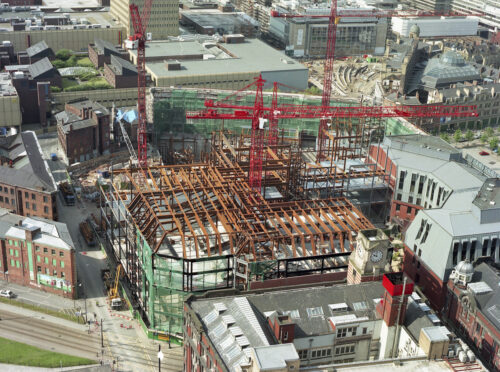ABOUT
Early History
Bagnall Demolition have been at the forefront of the demolition industry for over 40 years. Established in Warrington in the 1980's by John Bagnall, Bagnall's quickly developed a reputation for being a first class demolition contractor with unrivalled health and safety performance.
By the 1990's, Bagnall's had delivered a range of complex decommissioning schemes across all sectors with specific expertise in delivering deconstruction elements to culturally significant sites and sites with complex wider hazardous materials.
Throughout the 90's and early 00's we successfully delivered complex decommissioning schemes to sites such as John Rylands Library and the Free Trade Hall. We also completed complex local authority led schemes such as the 23 Storey, high-rise demolition of Pendine Flats, Liverpool plus the full site clearance of the 261 dwelling Blackbrook Estate in Warrington. Building on our reputation for leading the way in safety and compliance, we also added asbestos remediation to our portfolio of services, enabling us to deliver on all aspects of remediation in addition to completing stand-alone asbestos projects such as Leicester Square's Empire Theatre.


The Printworks
In 1996 our unrivalled experience saw us awarded arguably one of the most challenging decommissioning projects of the decade - the demolition and site clearance of the former Printworks following the devastating Manchester bombing in June 1996. To make a challenging project even more complex, we were required to safely execute one of the most complicated facade retention schemes ever undertaken in the UK.
Work in Nuclear
We have also completed several UK first demolition schemes, specifically with the nuclear sector. In 1991 we were commissioned by British Nuclear Fuels (BNFL) to undertake the controlled removal of asbestos and demolish the UK's first nuclear licensed site to be delicensed and released for unrestricted use (The Universities Research Reactor). In 1993 we were again leading the way with BNFL, this time decommissioning and demolishing the first nuclear installation to be deconstructed in the the UK. Building C7 at Capenhurst paved the way for demolition works on nuclear sites with many of the controls and systems implemented still used to this day.
Later that year we were again working for BNFL, this time charged with decommissioning and demolishing the ICI Billingham Triga Reactor. Works included full site asbestos remediation, demolition of the Reactor Hall and associated reactor core.
UKAEA Safety and Reliability Directorate Site (SRD)
At the end of decade, we cemented our place amongst the elite nuclear decommissioning experts when we successfully developed the first nuclear site to be sold for domestic development. The UKAEA Safety and Reliability Directorate Site (SRD) at Culcheth was purchased for the development of private housing and we were appointed to manage the removal of all asbestos, structures and associated underground tanks. During the course of the decommissioning works we implemented various technologies such as Gamma Dose Rate Measurement, High Sensitivity Gamma Detection and 3D Contamination Studies in addition to pioneering techniques such as low velocity explosives and remote demolition equipment.
Recent Projects Completed
- Demolition of council offices, police station and retail units in Southampton for LIDL.
- Demolition and site clearance of Monaco House and associated commercial premises in the heart of Birmingham.
- Full site strip-out and asbestos removal to John Dalton House, one of Deansgate's largest commercial premises.
- Demolition and Waste Disposal of 2,500 tonnes of bundled waste following factory fire in Manchester. The site occupier is the UK's largest producer of medical safety equipment and we enabled the client to return to normal operations within 48 hours during the height of the Covid-19 pandemic.

